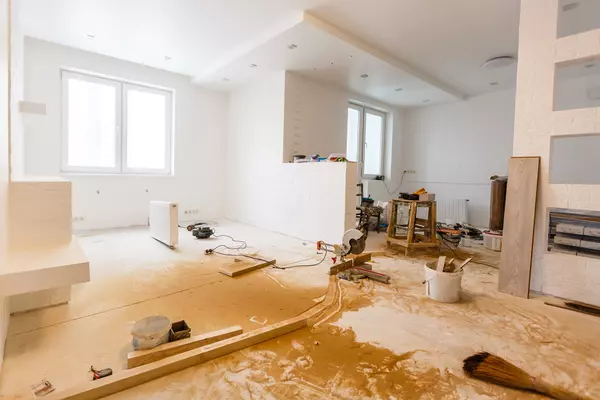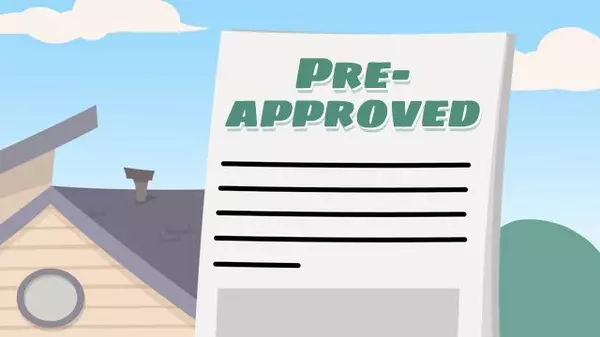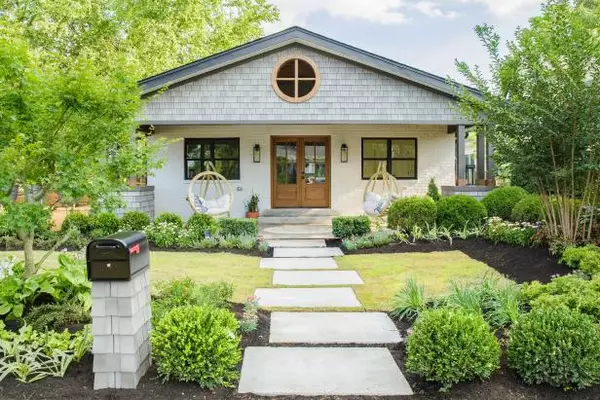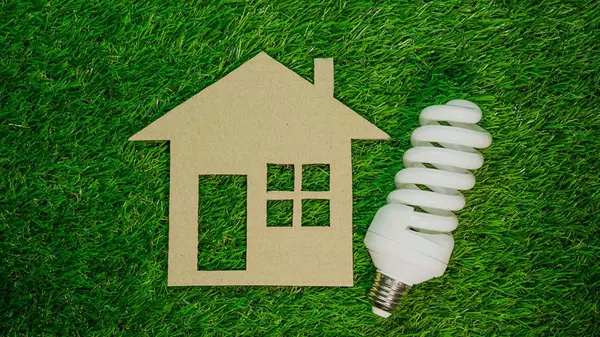
Maximizing ROI: The Best Home Renovations in 2024
In 2024, homeowners are increasingly focused on making renovations that not only enhance their living spaces but also boost their home's value. Whether you're planning to sell soon or simply want to improve your home, knowing which upgrades deliver the most return on investment (ROI) is key. Here are the top renovations that are trending this year. 1. Energy-Efficient UpgradesAs energy costs rise, homeowners are turning to eco-friendly renovations. Upgrading to energy-efficient windows, adding solar panels, and improving insulation are all smart choices in 2024. Not only do these projects lower utility bills, but they also make homes more attractive to buyers. In fact, energy-efficient homes can see a ROI of up to 85%, making these upgrades highly valuable. 2. Outdoor Living SpacesWith more people spending time at home, outdoor living spaces have become a priority. Adding a deck, patio, or even an outdoor kitchen can significantly boost your home’s appeal. According to recent studies, an outdoor living space can offer an ROI of 60% to 80%, depending on the quality and design of the project. 3. Kitchen and Bathroom RemodelsKitchens and bathrooms remain the most impactful spaces when it comes to home value. A modern kitchen with updated appliances, new countertops, and ample storage is a buyer's dream, offering a potential ROI of **70-75%**. Meanwhile, bathroom upgrades—such as new fixtures, vanities, and tile—can also generate returns around 60-70%. 4. Smart Home FeaturesIn 2024, the integration of smart home technology is a must-have for buyers. From smart thermostats and security systems to automated lighting and voice-controlled assistants, these features are not just a convenience but an expectation. Homes with smart technology see faster sales and a ROI of up to 80%, making it a worthwhile investment. 5. Curb Appeal EnhancementsNever underestimate the power of first impressions. Simple upgrades like new landscaping, a fresh coat of paint, or an updated front door can significantly enhance your home’s curb appeal. These small improvements can yield a ROI of 80-100%, and they don’t require a huge budget. By focusing on these renovations in 2024, you can not only enjoy a more functional and beautiful home but also maximize your return when it comes time to sell. Ready to explore your home's potential? Let’s discuss the best upgrades for your property and your goals!

The Growing Appeal of Multi-Generational Homes in 2024
As family dynamics evolve, so too do the needs and preferences of homebuyers. In 2024, one of the most notable trends in the real estate market is the increasing demand for multi-generational homes. These properties, designed to accommodate multiple generations under one roof, are gaining popularity for a variety of reasons, from economic considerations to the desire for closer family bonds. -What Are Multi-Generational Homes? Multi-generational homes are properties specifically designed or adapted to house extended family members, such as grandparents, parents, and children, all living together. These homes often feature separate living spaces, such as additional kitchens, bathrooms, or even in-law suites, providing privacy and independence while allowing family members to share common areas. -Why the Shift Towards Multi-Generational Living? 1. Economic Benefits: In an era of rising living costs and fluctuating housing markets, sharing a home can significantly reduce expenses. For many families, pooling resources to purchase a larger home is more affordable than maintaining separate households. 2. Aging Population: As the Baby Boomer generation ages, more families are choosing to live together to provide care for elderly relatives. Multi-generational homes offer a solution that keeps loved ones close while avoiding the high costs associated with assisted living facilities. 3. Cultural Influences: In many cultures, multi-generational living is the norm. As the U.S. becomes more diverse, these cultural practices are influencing housing trends, leading to a greater demand for homes that accommodate multiple generations. 4. Closer Family Bonds: Beyond the practical benefits, many families appreciate the closer relationships that come with living together. Multi-generational homes foster a sense of community, where family members can support each other emotionally and practically. What to Look for in a Multi-Generational Home When searching for a multi-generational home, there are several key features to consider: 1. Flexible Layouts: Look for homes with adaptable floor plans that allow for easy conversion of spaces into separate living areas. 2. Separate Entrances: Properties with multiple entrances provide privacy and independence for different family members. 3. Accessible Features: Homes with features like single-story living, wide doorways, and grab bars can be crucial for elderly family members. 4. Proximity to Amenities: Consider the location of the home in relation to schools, healthcare facilities, and other essential services. Conclusion The rise of multi-generational homes is a reflection of changing family dynamics and economic realities. For real estate agents, understanding this trend and being able to identify suitable properties is key to serving the needs of today’s homebuyers. For families, these homes offer a practical and fulfilling way to live together, creating a sense of unity and support across generations.

Why you should never skip out on a home inspection!
A home inspection is a crucial step in the home-buying process that offers numerous benefits to buyers. Here are some of the key advantages: 1. **Identifying Issues**: A professional home inspection can reveal potential problems or defects in the property that may not be apparent during a casual walkthrough. This includes structural issues, safety concerns, and maintenance issues. 2. **Informed Decision-Making**: The inspection report provides buyers with valuable information about the condition of the property. Armed with this knowledge, buyers can make informed decisions about whether to proceed with the purchase, negotiate repairs or price adjustments, or even walk away from the deal. 3. **Negotiation Power**: If the inspection reveals significant issues, buyers can use the inspection report as a negotiation tool. They can request that the seller address the problems before the sale or negotiate a lower purchase price to account for the needed repairs. 4. **Budget Planning**: Knowing the condition of the home allows buyers to budget for future repairs and maintenance. This can prevent unexpected expenses and help buyers plan for long-term homeownership. 5. **Safety Assurance**: A home inspection can uncover safety hazards, such as electrical issues, plumbing problems, or structural weaknesses, allowing buyers to address these concerns promptly for the safety of their family. 6. **Peace of Mind**: A thorough inspection can provide peace of mind to buyers, knowing they have a comprehensive understanding of the property's condition. This can reduce anxiety and uncertainty associated with buying a home. 7. **Learning About the Property**: Buyers can learn about the various systems and components of the home during the inspection. The inspector can provide tips on maintenance and operation, helping buyers become better homeowners. 8. **Future Planning**: Understanding the condition of the home can help buyers plan for renovations or upgrades if they choose to do so in the future. It can also help them prioritize improvements based on the inspection findings. 9. **Insurance and Lending Requirements**: Some insurance companies and lenders may require a home inspection before providing coverage or financing. A satisfactory inspection can facilitate the mortgage approval process and secure favorable insurance rates. 10. **Legal Protection**: In some cases, a home inspection can protect buyers legally. If undisclosed issues arise after the purchase, the inspection report can serve as evidence that the seller knew or should have known about the problems. It's essential for buyers to hire a qualified and experienced home inspector to ensure a thorough assessment of the property. While a home inspection does come with a cost, the benefits it provides in terms of information, negotiation leverage, and peace of mind often outweigh the expense, making it a wise investment for homebuyers.

A Must-Read for Aspiring Investors
A capitalization rate, often abbreviated as "cap rate," is a fundamental financial metric used in commercial real estate to evaluate the potential profitability and risk of an investment property. It is a crucial tool for real estate investors, as it provides valuable insights into the property's income-producing potential and helps them make informed decisions about purchasing, holding, or selling commercial real estate assets. The capitalization rate is calculated by dividing the property's net operating income (NOI) by its current market value or acquisition cost. The formula is as follows: Cap Rate = (Net Operating Income / Property Value or Cost) Here's a breakdown of the key components: Net Operating Income (NOI): NOI represents the property's annual rental income minus operating expenses such as property taxes, insurance, maintenance, utilities, and property management fees. It reflects the property's ability to generate income after accounting for its day-to-day operational costs. Property Value or Cost: This figure is either the current market value of the property or the acquisition cost, including purchase price and any associated acquisition expenses. It represents the total investment made in the property. Investors use the capitalization rate for several important reasons: Property Valuation: Cap rates are used to estimate the value of a commercial property based on its income potential. By comparing cap rates to recent sales of similar properties in the market, investors can assess whether a property is overvalued, undervalued, or priced appropriately. Risk Assessment: A higher cap rate typically indicates a higher level of perceived risk associated with the investment. Properties in riskier markets or those with potential management challenges may have higher cap rates. Conversely, lower cap rates are associated with properties in stable markets with reliable income streams. Investment Comparison: Investors can use cap rates to compare different investment opportunities. By analyzing cap rates for multiple properties, they can identify which ones offer better returns relative to the risk involved, aiding in portfolio diversification and investment decision-making. Yield Measurement: Cap rates can be seen as a measure of the property's potential yield or return on investment. A higher cap rate suggests the possibility of a higher annual return, but it may also come with greater risk. Financing Decisions: Lenders often consider the cap rate when underwriting commercial real estate loans. A property with a strong cap rate may be more attractive to lenders, potentially leading to better financing terms for investors. In summary, the capitalization rate is a critical tool in commercial real estate that helps investors assess the income potential and risk associated with an investment property. It serves as a valuable benchmark for valuation, risk evaluation, and decision-making, enabling investors to make informed choices that align with their investment objectives and risk tolerance.
Categories
Recent Posts










